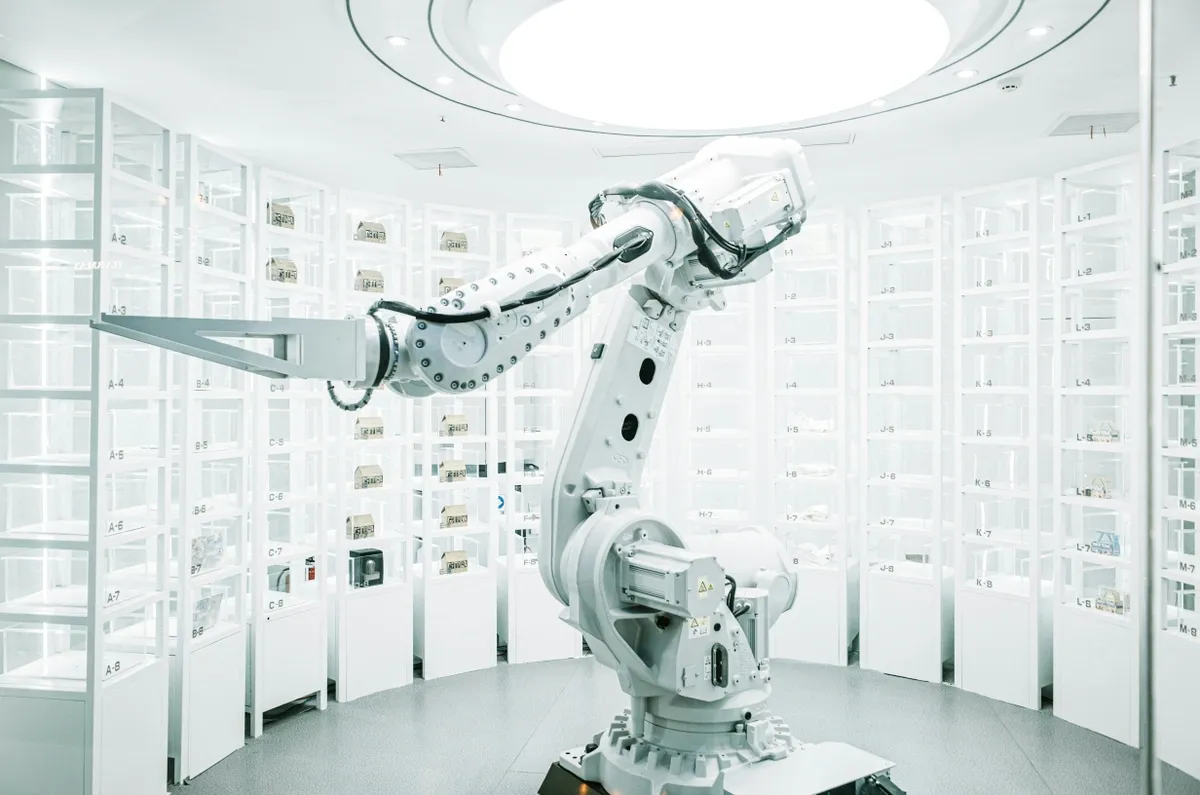
Artificial Intelligence (AI) is revolutionizing the architectural design and planning landscape, offering unprecedented accuracy, efficiency, and creativity. Leveraging AI tools, architectural firms can enhance their design processes, streamline project management, and unlock new levels of innovation. This article explores the practical applications of AI in architecture, providing insights into how firms can seamlessly integrate these cutting-edge technologies into their workflows to stay ahead in a competitive industry.
Understanding the Role of AI in Architectural Design
Artificial intelligence (AI) is increasingly being adopted in the field of architectural design, enabling architects and engineers to design, plan, and build structures more efficiently. AI offers innovative tools that can simplify complex processes, enhancing the designing process by providing architects with the ability to optimize designs for sustainability and cost-efficiency, and come up with unique design solutions (source). AI’s role in architecture is significant, aiding in everything from generating innovative smart city concepts to interior design visualizations. Use cases include streamlining early-stage planning, improving architectural mapping, optimizing sketching, streamlining compliance, improving urban planning, optimizing building energy management, improving construction safety, enabling parametric architecture, automating documentation, and revealing safety hazards (source).
Improved Design Accuracy
AI tools can enhance design accuracy by identifying design flaws that may be hard to detect with the human eye. For instance, AI algorithms can detect thermal bridges or weak spots in a building’s insulation, which can cause energy loss and reduce building performance. This precision ensures that buildings are designed to meet the highest standards of safety, energy efficiency, and durability (source). AI’s ability to reveal previously unknown insights allows architects to analyze and solve design challenges with a level of precision previously unrivaled (source).
Enhanced Efficiency
One of the most significant benefits of using AI in architecture is that it speeds up the design process. With AI tools, architects and designers can quickly generate multiple design options, test them for performance, and identify the most suitable ones. This efficiency helps architects to meet tight deadlines and deliver projects within the given timeframe. Furthermore, AI algorithms can analyze data and identify patterns that can inform design decisions, leading to better outcomes (source). AI can also automate repetitive tasks, freeing up architects’ time to focus on more complex and creative aspects of their work (source).
Boosted Creativity and Innovation
AI enhances creativity in architectural design by offering generative design tools that explore a vast array of design options. By leveraging AI algorithms, architects can generate alternative designs based on specified parameters, allowing for a more iterative and expansive design process. These tools can streamline workflows, optimize designs, and explore new creative possibilities (source). AI’s integration in architecture can transform the industry, offering a range of benefits that revolutionize how professionals approach their work, enhancing design exploration, and fostering innovation (source).
In conclusion, AI’s role in architecture is transformative, offering innovative tools, enhancing design accuracy, boosting efficiency, and fostering creativity. It is reshaping the way architects approach their work, leading to more sustainable and efficient designs.
Practical Applications of AI in Architecture
Artificial Intelligence (AI) is reshaping the architecture industry by introducing tools and methodologies that streamline design processes, enhance project management, and foster innovation. Here, we delve into the practical applications of AI in architecture, exploring AI-driven design software, project planning, and real-world case studies.
AI-Driven Design Software and Tools
AI-driven design software is revolutionizing the way architects approach their projects. These tools enhance design accuracy, efficiency, and creativity by automating complex tasks and generating innovative solutions. Here are some notable examples:
- Midjourney: This AI-assisted concept design tool enables architects to create photorealistic images from written prompts, providing a vast canvas for creative exploration (source).
- Adobe Firefly: Integrated with the Adobe suite, Firefly leverages generative AI models to make image creation and editing faster and more efficient (source).
- Maket.ai: This platform uses advanced pattern recognition algorithms to generate thousands of design options within minutes, tailored to project requirements (source).
- ArkDesign.ai: AI-powered ArkDesign.ai offers optimized schematic designs, aligning with specific project needs (source).
- ARCHITEChTURES: This tool revolutionizes residential planning with rapid iterations and accurate insights, significantly shortening the feasibility analysis process (source).
AI in Project Planning and Management
AI significantly enhances project planning and management in architecture. It helps identify patterns and insights that inform efficient and sustainable design decisions. AI applications in project management include:
- Streamlining Early-Stage Planning: AI tools can quickly analyze site conditions and regulatory constraints, providing architects with crucial data to inform initial design decisions.
- Improving Architectural Mapping: AI algorithms can generate detailed architectural maps, highlighting potential issues and optimizing design layouts.
- Optimizing Sketching and Compliance: AI aids in creating precise sketches and ensuring designs comply with local regulations.
- Enhancing Urban Planning: AI supports large-scale urban planning by analyzing demographic and environmental data to create sustainable city designs.
- Automating Documentation: AI can automate the creation of detailed documentation, reducing the time architects spend on administrative tasks (source).
Case Studies of AI Implementation in Architectural Firms
Several architectural firms have successfully integrated AI into their workflows, yielding impressive results:
- Spacemaker AI: This platform helps AEC professionals design eco-friendly homes using big data, optimizing design processes (source).
- AI+ Architecture / Stanislas Chaillou: Chaillou’s system generates and furnishes floor plans, balancing functionality and style, showcasing AI’s potential in space organization (source).
- Artificial Intelligence in Architecture / 3XN: Through GXN, 3XN has identified key areas where AI positively impacts research, design, and fabrication, optimizing their construction processes (source).
These examples highlight the transformative potential of AI in architecture, offering tools and processes that streamline workflows, enhance creativity, and ensure more efficient and sustainable designs. Minute7’s time tracking and expense reporting solutions can complement these AI tools, providing a comprehensive and streamlined workflow for architectural firms, ensuring all aspects of a project are managed efficiently.
Integrating AI into Architectural Workflows
Integrating Artificial Intelligence (AI) into architectural workflows can be a transformative move, enhancing design accuracy, efficiency, and creativity. Here’s a step-by-step guide to incorporating AI tools into your existing workflows, overcoming common challenges, and staying ahead with future trends.
Steps for Incorporating AI Tools into Existing Workflows
-
Identify Beneficial Areas: The first step is to identify areas where AI can be most beneficial. AI can be used for design exploration, optimization, performance analysis, and automating repetitive tasks. For instance, AI can streamline the design process by generating multiple design options and testing them for performance (source).
-
Train Team Members: Training your team to use AI tools effectively is crucial. This may require a change in mindset, embracing AI as a tool to augment human creativity rather than replace it. Providing comprehensive training sessions and resources can help team members become proficient in using AI tools (source).
Overcoming Challenges in AI Integration
Integrating AI into architectural workflows comes with its own set of challenges. Here are some common barriers and solutions:
- Loss of Human Intuition and Creativity: AI should be seen as a tool to enhance, not replace, human creativity. Encourage your team to use AI for generating ideas and solutions, but always apply their intuition and expertise to refine and finalize designs.
- Data Accuracy and Dependence: Ensure that the data used by AI tools is accurate and up-to-date. Regularly update datasets and validate AI outputs to maintain high standards.
- Ethical Implications: Address ethical concerns by establishing clear guidelines on AI usage. Ensure that AI tools are used responsibly and transparently.
- Skill Gap and Training: Bridging the skill gap requires continuous training and upskilling. Provide ongoing education and support to help your team stay current with AI advancements (source).
Future Trends and Advancements in AI for Architecture
AI is poised to bring about significant advancements in the architecture profession. Future uses of AI in architecture could include:
- Generative Design: AI can generate multiple design options based on specific criteria, allowing architects to explore a wider range of possibilities.
- Site Analysis and Pattern Recognition: AI tools can analyze site conditions and recognize patterns that inform sustainable and efficient design decisions.
- Energy Efficiency and Sustainability: AI can optimize designs for energy efficiency, reducing the environmental impact of buildings.
- Building Information Modeling (BIM) and Project Management: AI can enhance BIM processes and project management, ensuring more efficient and organized workflows.
- Virtual and Augmented Reality: AI can integrate with VR and AR technologies to provide immersive design experiences.
- Cost Estimation and Material Selection: AI can provide accurate cost estimates and recommend optimal materials, streamlining the construction process (source).
By staying current with these trends, architectural firms can leverage AI to enhance their workflows and deliver innovative, sustainable designs. Minute7’s robust time tracking and expense reporting solutions can further streamline your processes, ensuring efficient project management and accurate billing.
Maximizing the Impact of AI in Architectural Practices
As we have seen, the integration of Artificial Intelligence (AI) into architectural design and planning offers a multitude of benefits, from enhanced accuracy and efficiency to heightened creativity and innovation. The practical applications of AI-driven tools and methodologies are revolutionizing the architecture industry, enabling firms to streamline their workflows and deliver more sustainable and efficient designs.
By identifying areas within their workflows that can benefit from AI, training team members to effectively use these tools, and staying abreast of future trends, architectural firms can unlock the full potential of AI. Overcoming challenges such as maintaining human intuition, ensuring data accuracy, and addressing ethical considerations are crucial steps in this transformative journey.
Minute7 complements these advancements by providing a robust time tracking and expense reporting solution that integrates seamlessly with QuickBooks. As architectural firms increasingly adopt AI tools to enhance their design and planning processes, Minute7 ensures that project management remains efficient and accurate. With Minute7, firms can focus on leveraging AI to push the boundaries of innovation while maintaining streamlined operations and precise billing.
Through the strategic integration of AI and Minute7’s comprehensive solutions, architectural practices can not only enhance their design capabilities but also optimize their overall project management, ensuring they stay ahead in a competitive industry.



